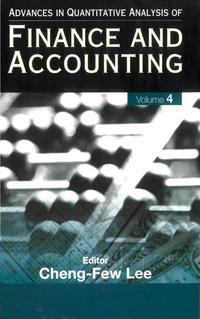
1) The geotechnical engineer decided to use the soil modulus interpreted from the pressuremeter test instead of using a correlation of E = 1 N (MPa) which may be lower and more conservative. Provide potential rationale for such a decision [2 marks] Question 4 [20 marks] A soil investigation was carried out at a site involving various in-situ tests and laboratory tests. The uncorrected N-SPT values and the CPTu profiles (qc, fs, u2 in MPa) are presented in Figure Q4-1 together with the Menard pressuremeter test data at 21.Om depth in Figure Q4-2. The water table is found at 3m below the ground surface. The soil unit weight above the water table is 16 kN/m and the average saturated unit weight of the soil below the water table is 19 kN/m. The water unit weight can be taken as 10 kN/m. a) The efficiency of the hammer used for the SPT tests is 65%. Based on the SPT test, the soil at 12.5m depth and 21.0m depth is identified as coarse-grained and fine-grained soil respectively. Calculate corrected N-SPT values at 12.5m and 21.Om depth. [4 marks] ed S260 tous Pore pressure, 2 (MPa) at21.om deph b) From the CPTu data, interpret soil type at 12.5m depth and 21.0m depth using the normalized CPTu chart of Robertson et al. (1990). The net area ratio of the cone, a, is 0.75. Plot the answer on the chart provided. [6 marks) 12. En dooh c) Soil classification tests on the samples obtained from adjacent boreholes provide the following information. Sample Depth 12.5m 21. Om Particle size - Gravel (%) Particle size -Sand (% 88 4 Particle size -Silt and Clay (%) 12 96 Liquid limit (%) 25 65 Plastic limit (%) 20 25 Sleeve friction, ts (MPa) thu why many has Identify the soil type at 12.5m depth and 21.Om depth from the laboratory test results and comment on any discrepancy with the interpreted soil type from the CPTu results. [3 marks] Un corrected come stance at 126m dech IN 1 21 on depth R (w) abeuns puno Moog uidea d) Estimate suitable soil shear strength parameter for the soil at 12.5m depth and 21.Om depth from the CPTu data considering the soil type identified from the laboratory test. From Triaxial UU tests on sampled clayey soil at similar depths, a cone factor Net of 25 is found appropriate. [2 marks] 10/150, 12/150 9/150, 11/150 O 13/150, 11/150 e) Estimate initial elastic modulus of the soil (in MPa) and the corresponding average cavity strain (in %) from the Menard pressuremeter test data at 21.0m depth. The soil Poisson ratio v is 0.33 and the initial volume of the measuring cell is 550 cm [3 marks] Uncorected N-SPT G 5/150, 51150 OSURE + 3/150, 37150 G 5/1503/150 157150, 13/150 4.150, 16/150 (150.137150 S/150, 16/150 8/150, 14/150 - (w) abeuns puno Mundog Figure 04-1 1) The geotechnical engineer decided to use the soil modulus interpreted from the pressuremeter test instead of using a correlation of E = 1 N (MPa) which may be lower and more conservative. Provide potential rationale for such a decision [2 marks] Question 4 [20 marks] A soil investigation was carried out at a site involving various in-situ tests and laboratory tests. The uncorrected N-SPT values and the CPTu profiles (qc, fs, u2 in MPa) are presented in Figure Q4-1 together with the Menard pressuremeter test data at 21.Om depth in Figure Q4-2. The water table is found at 3m below the ground surface. The soil unit weight above the water table is 16 kN/m and the average saturated unit weight of the soil below the water table is 19 kN/m. The water unit weight can be taken as 10 kN/m. a) The efficiency of the hammer used for the SPT tests is 65%. Based on the SPT test, the soil at 12.5m depth and 21.0m depth is identified as coarse-grained and fine-grained soil respectively. Calculate corrected N-SPT values at 12.5m and 21.Om depth. [4 marks] ed S260 tous Pore pressure, 2 (MPa) at21.om deph b) From the CPTu data, interpret soil type at 12.5m depth and 21.0m depth using the normalized CPTu chart of Robertson et al. (1990). The net area ratio of the cone, a, is 0.75. Plot the answer on the chart provided. [6 marks) 12. En dooh c) Soil classification tests on the samples obtained from adjacent boreholes provide the following information. Sample Depth 12.5m 21. Om Particle size - Gravel (%) Particle size -Sand (% 88 4 Particle size -Silt and Clay (%) 12 96 Liquid limit (%) 25 65 Plastic limit (%) 20 25 Sleeve friction, ts (MPa) thu why many has Identify the soil type at 12.5m depth and 21.Om depth from the laboratory test results and comment on any discrepancy with the interpreted soil type from the CPTu results. [3 marks] Un corrected come stance at 126m dech IN 1 21 on depth R (w) abeuns puno Moog uidea d) Estimate suitable soil shear strength parameter for the soil at 12.5m depth and 21.Om depth from the CPTu data considering the soil type identified from the laboratory test. From Triaxial UU tests on sampled clayey soil at similar depths, a cone factor Net of 25 is found appropriate. [2 marks] 10/150, 12/150 9/150, 11/150 O 13/150, 11/150 e) Estimate initial elastic modulus of the soil (in MPa) and the corresponding average cavity strain (in %) from the Menard pressuremeter test data at 21.0m depth. The soil Poisson ratio v is 0.33 and the initial volume of the measuring cell is 550 cm [3 marks] Uncorected N-SPT G 5/150, 51150 OSURE + 3/150, 37150 G 5/1503/150 157150, 13/150 4.150, 16/150 (150.137150 S/150, 16/150 8/150, 14/150 - (w) abeuns puno Mundog Figure 04-1







